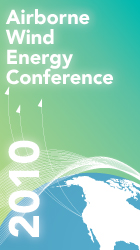NASA Collaboration: Countdown to Takeoff

Robert J. “Joe” Shaw, Ph.D.
NASA Glenn is taking the lead in forging a NASA-wide agreement with Joby Energy with a goal of helping accelerate the development and deployment of airborne wind technology.
Robert J. “Joe” Shaw, Ph.D., Chief Business Development and Partnership Office, NASA Glenn Research Center based in Cleveland, Ohio is driving the partnership process. “We are exploring various cutting edge technologies. If our capabilities align with technology needs which can strengthen and add value to our nation’s energy secure future — then let’s make it happen,” Shaw said.
According to Shaw, NASA is interested in airborne wind systems because the technology complements its strategic missions and charter to advance science, space and aeronautics. Shaw says that wind energy is one area that NASA is very interested in exploring. “The fact that the wind generators are airborne adds a new twist for us.”
Shaw sees a particular urgency to unearthing and developing a technology which could be the 'Apollo-like program in advanced energy' that candidate Barack Obama called for in his campaign and that answers Energy Secretary Steven Chu’s call for a 'golden moment in energy innovation'.
According to Shaw, a presentation by Archan Padmanabhan, Senior Engineer for Joby Energy, at the recent NASA Internal Workshop on Wind Power Capabilities, triggered NASA-wide interest and enthusiasm for a potential partnership. “His analysis of high altitude wind and the potential for airborne wind systems captured the attention of the audience and reinforced the potential of this emerging technology”.
Shaw said the technology and regulatory challenges inherent in further development and deployment of airborne wind systems align with a number of NASA areas of expertise. "I see how this technology could benefit from the core competencies of NASA sites throughout the country."
Shaw says NASA’s capability in Unmanned Aircraft Systems, aeronautics, icing, airspace issues and other areas can hasten the technologies development timeline.
Padmanabhan, one of Joby Energy’s founding engineers, is enthused about the potential NASA partnership. “A partnership with NASA would provide us with incredible research and development opportunities,” he said. “I see it as a win-win situation -- we’ve made some important advancements in system optimization and developed some proprietary technological advances that could benefit NASA.”
Shaw said that he is advocating for a NASA Space Act Agreement. “That’s a formal agreement outlining areas of mutual interest between NASA and Joby Energy and paving the way for opportunities to find funding for mutual projects. It’s a legal document that establishes intellectual property rights and liability essential to a formal collaborative relationship.”
In addition to a Space Act Agreement with Joby Energy, Shaw said NASA would look forward to discussions with the Airborne Wind Energy Consortium to advance the industry and engage in a technology exchange.
“Ultimately we’re hoping NASA expertise to support the energy needs of this nation,” Shaw said. “If we make advances in areas that benefit NASA and industry we call that dual-use technology. That means technologies needed for NASA to achieve mission work in space, aerospace or science can be employed in other sectors".


